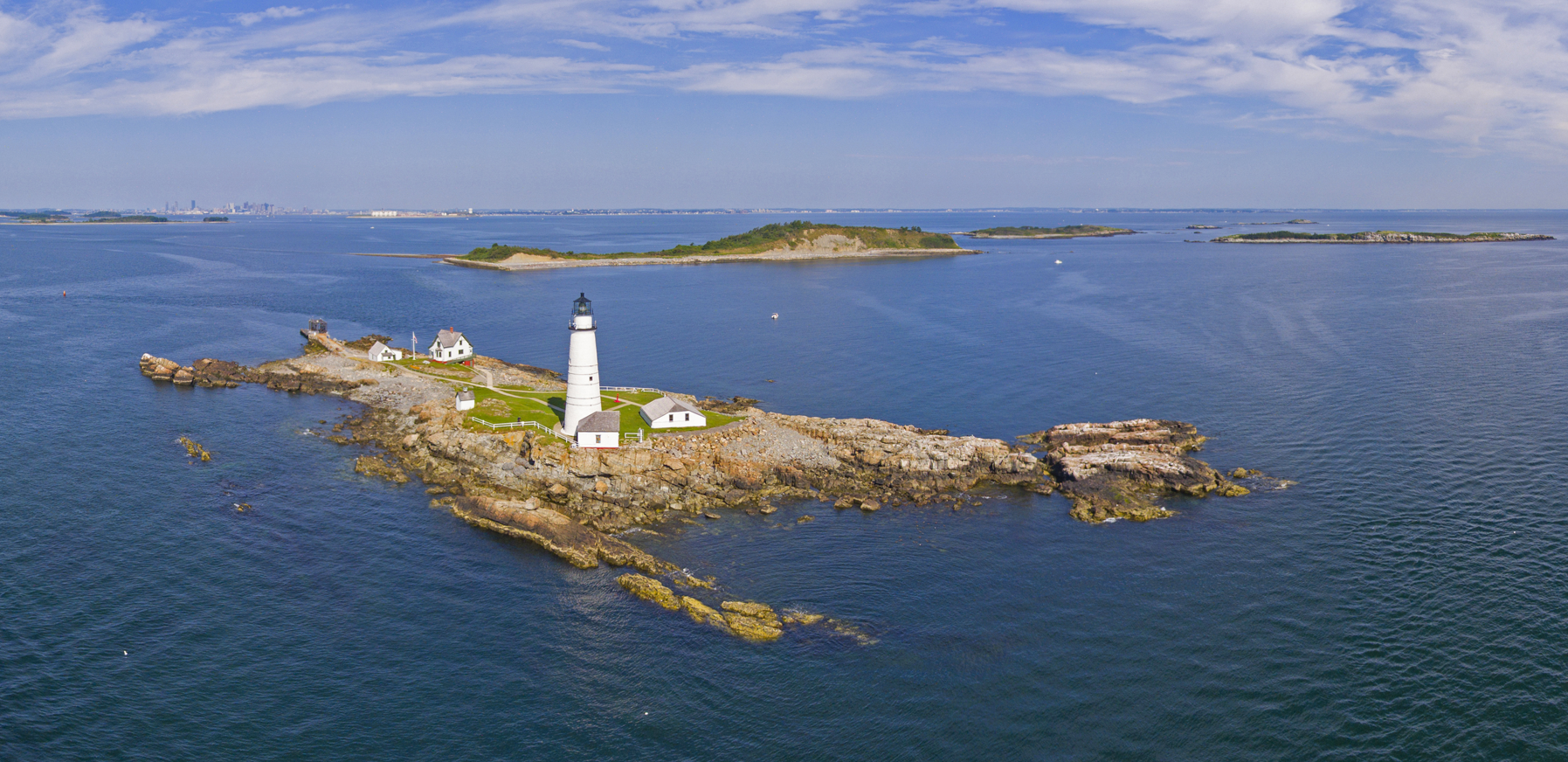Boston Harbor is sprinkled with dozens of grass mounds, peeping out of the water like half-buried eggs. Don’t be fooled by these innocuous-looking islets, these are no ordinary islands: they are sunken drumlins.
Drumlins are smoothly rounded, oval hills that are formed when glaciers move over debris made of clay, sand, gravel, cobble, and boulders that were deposited directly by the ice. As the glacier slides over, it reshapes the material into streamlined mounds, giving drumlins their elongated and smooth appearance. They often occur in clusters, called “drumlin fields”, where multiple drumlins are aligned in the direction the ice flowed thousands of years ago.
In some rare cases, fields of drumlins can be flooded with water due to rising sea levels, creating a collection of so-called drumlin islands. According to the National Park Service, there are just three flooded drumline fields in the world, one of which is in Boston Harbor.
Over the past 100,000 years, the geology of the Boston Basin has been carved and reshaped by powerful waves of glaciation. In the most recent of these icy upheavals, between 20,000 and 10,000 years ago, the landscape was sculpted into the distinctive drumlins that still ripple across the terrain today.

Boston Lighthouse on Little Brewster Island in Boston Harbor, Massachusetts.
Image credit: Wangkun Jia/Shutterstock.com
The 34 drumlin islands are located in Boston Harbor Islands National and State Park among a bunch of hiking trails and some historic lighthouses. One of the most impressive drumlin islands is Georges Island. Located at the opening of the harbour, it’s home to a Civil War-era fortification called Fort Warren that was used as a prison camp for both Confederate prisoners of war and government officials.
The word drumlin derives from the Irish word droimnín, meaning “little ridge”. Boston, of course, is significantly influenced by its Irish heritage and is considered one of the most Irish cities outside of the Emerald Isle.
Coincidentally, another one of the three flooded drumlin fields in the world can be found along the Atlantic coast of County Mayo in Ireland at Clew Bay. Local folklore claims there are 365 of them in the bay, one for every day of the year. The third drumlin field, by the way, is believed to be in Fláajökull, southeast Iceland, another place with a fascinating and unique geological history.
The presence of these rare, flooded drumlin fields in both Boston Harbor and Clew Bay highlights the deep connection between these two places on opposite sides of the Atlantic. Boston’s rich Irish heritage is reflected not just in its culture, but in the ancient landscape itself.
Source Link: Boston Harbor Has One Of The World's Ultra-Rare Sunken Drumlin Fields